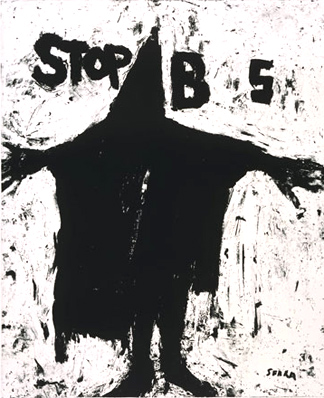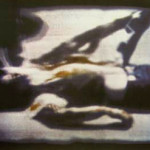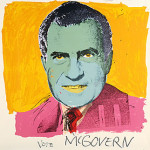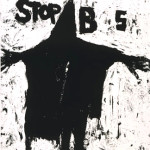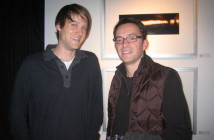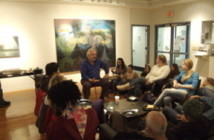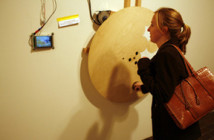Every work of visual art is an object of desire. It makes you want to get closer, see more, feel the texture. And usually, of course, this is forbidden or impossible—either because the artwork is on display, or because the object is standing in for the real thing, the celebrity or street scene or bloody pheasant, that is nowhere to be found. Even an abstract piece promises something beyond what’s there. It’s hands off. Which, naturally, fuels desire even more.
So how does a piece transcend its aesthetic lust and enter the world of action? What happens when a work of art wants to incite, rally, protest? In “Dissent!”, at the Fogg Art Museum in Cambridge, Massachusetts through February 25, it’s not so easy. What hits you first is a big black-and-white photolithograph by Richard Serra that shoves a hooded AbuGhraib prisoner to the foreground under the caption “Stop BS,” which has been playfully reworked from Serra’s earlier version “Stop Bush” (also on view) that was sold on t-shirts and available for free Internet downloads before the 2004 elections. Well, that didn’t exactly stop GW then, although it still expresses a frustrated desire. Serra said the image was not art but instead “a way just to get the message out,” and it probably did, at least to the converted. But his statement is a bit disingenious since here it is as a big fat work of art at the Fogg, and even earlier the image and t-shirt had been sold through regular art channels. And it is art. What strikes you most is the print’s crude urgency, the smudges and fingerprints, as if the prisoner had scratched it onto paper himself.
In “Dissent!” it’s interesting how many pieces invoke the viewer to stop or strike, to not do something, either overtly, as in the black, white, and red “Strike” posters and t-shirts created by the Harvard Graduate School of Design in 1969, or implicitly, like the 1912 poster by José Guadalupe Posada that satirizes the Mexican president Madero in a peasant’s sombrero, clutching a bottle of liquor produced by his wealthy family: more or less, “Stop Posada.”
It could be that visual art’s passive state of desire translates more easily to passive resistance. Getting people out into the street is a lot tougher. Inciting them to take positive action is probably a pipe dream. One of the few artworks here that tried is Andy Warhol’s demonized, alien-green Nixon above the handwritten “Vote McGovern.” Again, that didn’t exactly have the intended effect, at least in 49 out of 50 states. (But is this kind of measure fair to the artwork?—probably, when the artist aims for real-world results. And sometimes the artist succeeds, like when child labor legistation was passed in 1916 in response to Lewis Hines’ brutal documentary photos.)
Many pieces in the exhibition try for a middle ground, to memorialize, a role that fits comfortably with art’s usual task of making something that’s not here felt, real, palpable. “Kent State” by Richard Hamilton extended the cultural life of a TV image of a shot student in an edition of 5ooo silkscreens. The nuanced cyans and pinks amongst the horizontal scan lines evoke the horror of the moment. Sister Corita’s neon-colored poster “If I” captures the passion of Coretta Scott King at her husband’s funeral through her uplifted gaze and boldfaced message of “CRUCIFIXION/ REDEMPTION/ RESSURECTION OF/ THE SPIRIT.” You wish you had been there at the service, and wonder anew why MLK had to die. The poster expresses itself less through an exclamation point of “Dissent!” than with a question mark.
Links:
Harvard University: Fogg Art Museum
"DISSENT!" ios on view through February 25th at The Fogg Art Museum, located at 32 Quincy St., Cambridge, MA
All images are courtesy of the Google Image Search.

